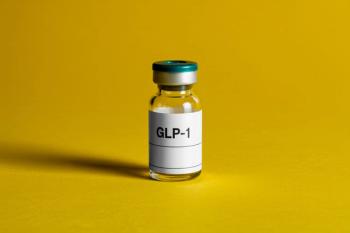
FDR, the Bene Gesserit, and the Psychiatry of Fear
In these uncertain times, many look to Franklin D. Roosevelt’s quote “The only thing we have to fear is . . . fear itself.” But what does that really mean?
COMMENTARY
“The only thing we have to fear is . . . fear itself.” -Franklin D. Roosevelt
From his
Unfortunately, his quote is usually taken out of context, which happens so often with well-known quotes. The complete sentence is:
“So, first of all, let me assert my firm belief that the only thing we have to fear is fear itself-nameless, unreasoning, unjustified terror which paralyzes needed efforts to convert retreat into advance.”
Thus, he is not saying “do not to have fear,” but rather “do not to have inappropriate fear.” Specifically, he is warning the country about that extreme fear that we often call panic. And that is where his words ring so true for us today. Not only are we facing an economic crisis, but the
So, what can be done about our
The nature and nurture of fear
Fear is a normal, hard-wired automatic response to perceived physical and/or emotional danger. In the ancestral world, the flight-or-fight reaction was necessary to protect us humans from everyday dangers, dangers that often had life-and-death consequences. However, our prefrontal cortex developed the potential to put the brakes on our fear response via cognitive reassessment.
Humans learn what to fear in their environments through three main processes: direct experience, observation of others, and education. In addition, fear can be socially contagious. Yet everyone is unique in their fear reactions. In other words, we can see a spectrum of individual responses for each perception of danger, including cases in which the reaction may be too little, too much, or just the right amount. In our present example of the coronavirus threat, direct experience has been virtually nil, observation is just beginning, and agreed upon information (eg, education) still a challenge. Thus, our ability to truly understand what to fear is hampered.
Benefits and harms of fear
Fear can be a gift when the fear is warranted and corrective action taken. Indeed, appropriate fear was crucial for humankind to survive and develop. Fear can even point the way to finding new ways to learn.
Yet fear can be harmful, too. For instance, the fear of change and taking risks can hamper individuals and society from growing and evolving. Fear can be leveraged in negative ways, too. Politicians can use fear to manipulate people.1 In a recent election, a candidate said, “Real power is-I don’t want to use the word-fear.”2 Plus, media can amplify or downplay information, oftentimes to elicit a certain reaction. (And definitely for us to “tune in” later to learn more.)
In addition to the potential negative social affects and detrimental effects on the brain, fear can hurt the body itself, especially the immune system. In other words, fear may increase vulnerability to the worst repercussions of the coronavirus. Fortunately, there is a potential antidote-compassion can have the opposite effect.
Fear-connected psychiatric problems
In some ways, psychiatry could be deemed the fear specialty, since fear is endemic to so many psychiatric challenges. The DSM-5 has some thoughts on this issue. Although fear and anxiety are often used interchangeably, it conveys: “Fear is the emotional response to real or perceived imminent threat, whereas anxiety is anticipation of future threat.” 3 It further notes, “Anxiety disorders differ from developmentally normative fear or anxiety by being excessive or persisting beyond developmentally appropriate periods.” And, in how fear is intertwined with phobias, “Phobias are anxiety disorders involving fear or anxiety that is excessive or out of proportion to the object or situation.”
Of course, sometimes the pathological repercussions of fear may also be delayed, as in the case of
Moreover, there is a condition in which fear seems to be inadequate, even absent-in its extreme, we consider that sociopathy. Sometimes inadequate fear is related to immaturity and a sense of being invincible. An example of such are the teenagers partying on beaches during their spring breaks despite physical distancing recommendations.
Fear is the driving force (and often a projection of personal anger) in other psychological problems, such as in xenophobia, racism,
It is possible that this sort of fear has been intensifying over the recent years, even before the pandemic, but at such a slow rate that it did not garner enough attention. After all, there has been a gradual rise in the prevalence of many psychiatric disorders, suicide, xenophobia, and burnout. Perhaps the increasing popularity of meditation has been an attempt to regain some calmness.
Therapeutic interventions for fear
Treatment and research of fear per se has been quite limited, perhaps because it is so ubiquitous and is part and parcel of broader conditions. There are no so-called anti-fear medications, although meditation and relaxation techniques can decrease its intensity.
Part of the problem is the lack of tools to measure and assess fear intensity. Fear is palpable, but elusive. We know when a fever is too high from the measurement of a thermometer, but we do not have a “fearometer.” Questionnaires have been developed, but none have achieved practical and effective usage, and useful measurement of physiological changes due to fear is still elusive.
Since cognitive reassessment is crucial for assessing fear, logically speaking, cognitive behavioral psychotherapy should be helpful in reframing erroneous personal belief systems. The logotherapy developed by Dr
The general public usually rely on common sense advice, short and catchy quotes (like FDR’s fear quote), and colloquialisms to deal with fear. Unfortunately, while these may seem helpful, they can also be harmful. During this pandemic, we repeatedly hear that “We will get over this.” Although there is some truth to this statement-and it is seemingly reassuring-we also know this virus will result in many deaths as well as chronic health and mental health problems, not to mention financial problems and even ruin. Perhaps we would be better to say: “We will get over this the best we can.”
Advice has also centered over gaining control over the things we have some control over. But when does this turn into irrational behavior, like hoarding food, masks, and other items that are needed by everyone? Hoarding toilet paper and clogging toilets may indicate how we can regress, in psychoanalytic terminology, under this stress to anal retentive psychological levels of control. Given that it has only been a week or so of disruption, there is a chance this behavior will get worse over time. Disaster psychiatry has shown that people tend to be at their best in the acute stage of disaster. We have many more weeks to come, with increased disease and maybe less resources, like ventilators or hospital beds.
Conclusions
Another insightful quote comes from Frank Herbert’s popular sci-fi novel Dune:5 “Fear is the mind-killer.”
Once again, this suggests that fear is bad, devastating, and unnecessary. However, like FDR’s quote, this is out of context. In Dune, there is an ancient order of women called the Bene Gesserit who have learned techniques to process and learn from fear in what they call the Litany Against Fear. The full quote shares:
“I must not fear. Fear is the mind-killer . . . I will face my fear. I will permit it to pass over me and through me. And when it has gone past I will turn the inner eye to see its past . . .”
How can this work into our current reality-the reality of fearing coronavirus? Here are some tips we can all use (
- Recognize fear, on any level and to any degree;
- Face the fear in any given perceived danger;
- Learn from the fear;
- Try new coping mechanisms;
- Assess what happened; and
- Make useful and creative adjustments.
Importantly, these principles are like those in psychotherapy:
- The patient comes to psychotherapy because of fear.
- The patient examines why they are inappropriately fearful.
- The patient turns that knowledge into action.
It may be that leadership, like that of FDR, is needed to adequately apply these principles to society and individuals. Such leadership does not have to come mainly or solely from our president. Since this is a medical rather than military war, it can also come from scientists, emergency physicians, psychiatrists, and psychotherapists who have expertise in handling fear. With the correct actions and guidance, fear can become a mind-expander, something we need to respond as best as we can to such crises.
Disclosures:
Dr Moffic is an editorial board member and regular contributor to Psychiatric Times. He was a tenured Professor at the Medical College of Wisconsin until he retired in 2012. Since then he has functioned as a private community psychiatrist providing pro bono services locally, nationally, and internationally. Currently, he is focused on four major advocacy initiatives: physician burnout, climate instability, Islamophobia, and anti-Semitism. He is co-editor of Combating Physician Burnout: A Guide for Psychiatrists, with Richard F. Summers and Sheila Loboprabhu.
References:
1. Ruiter R, Abraham C, Kok G.
2. Woodward B.
3. American Psychiatric Association.
4. Frankl V.
5. Herbert F.
Newsletter
Receive trusted psychiatric news, expert analysis, and clinical insights — subscribe today to support your practice and your patients.













